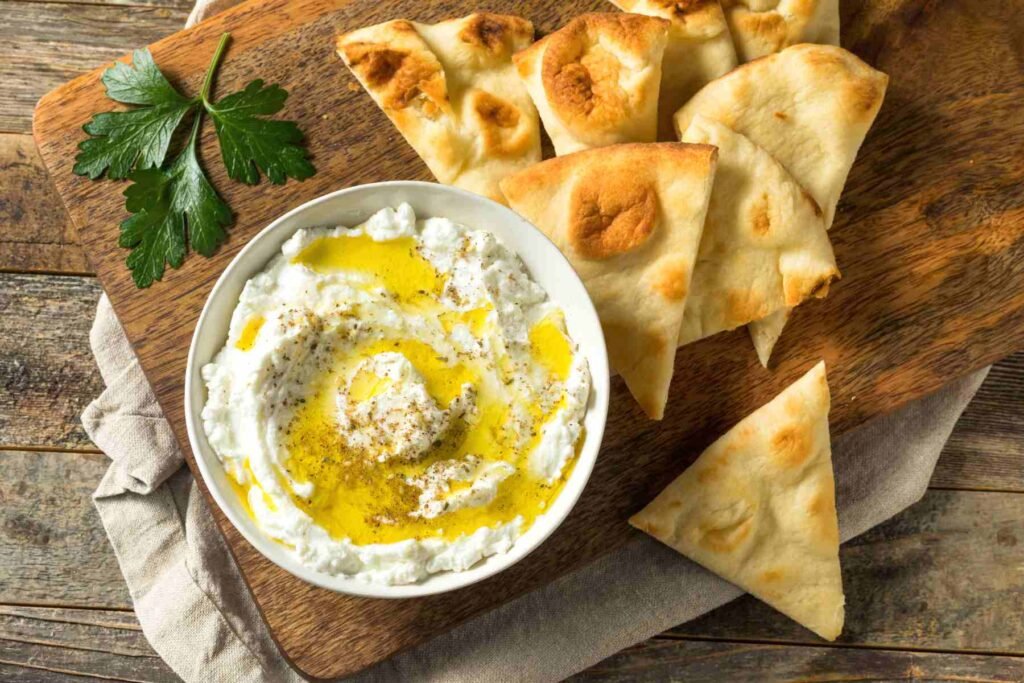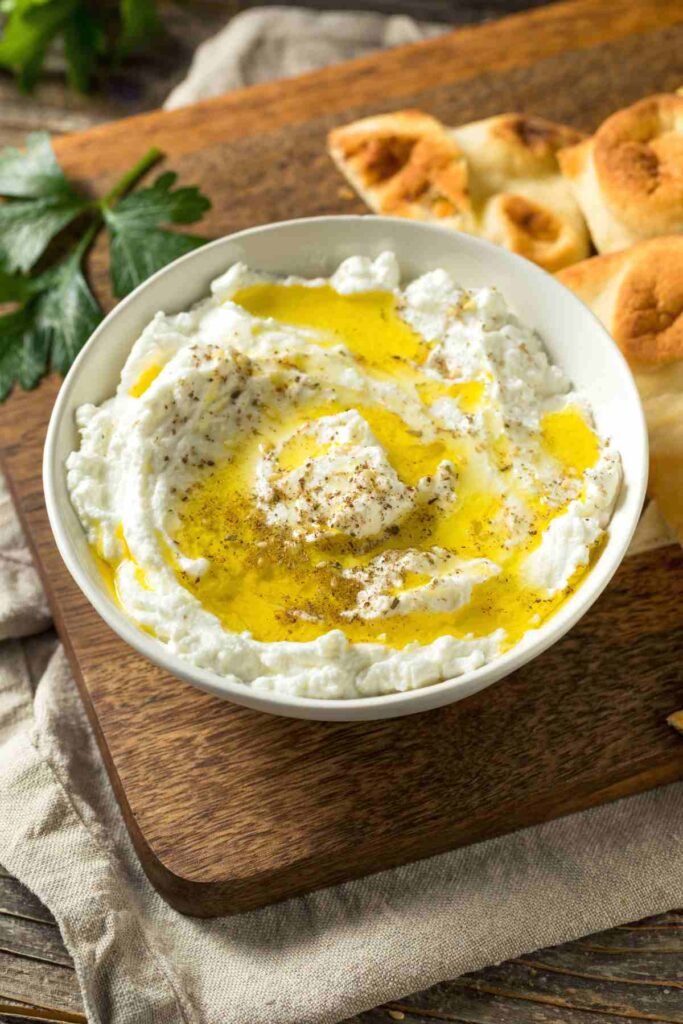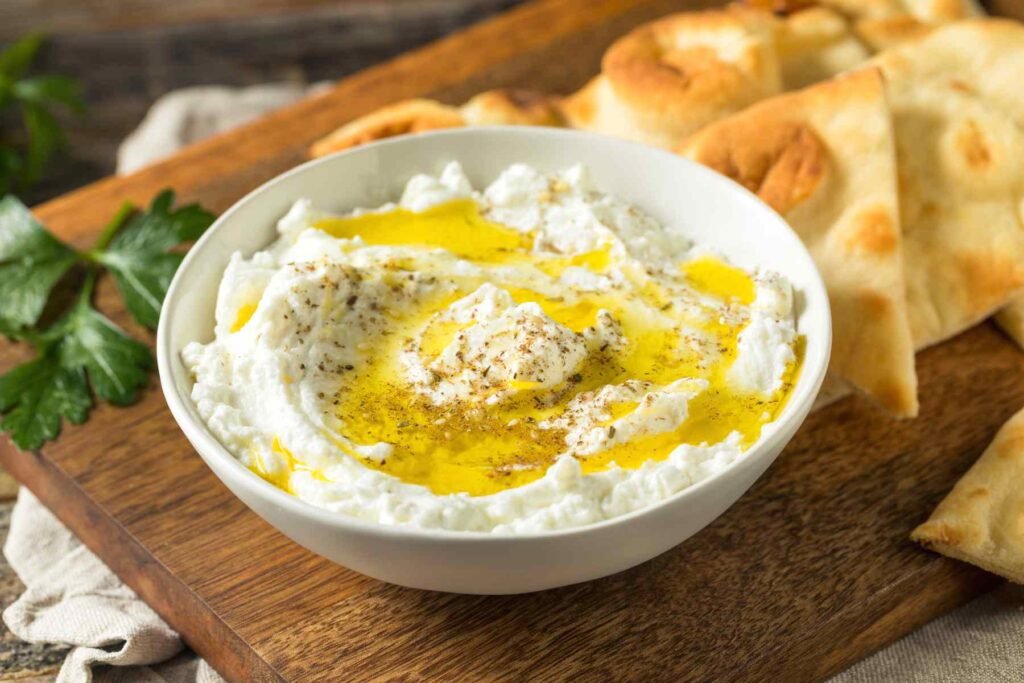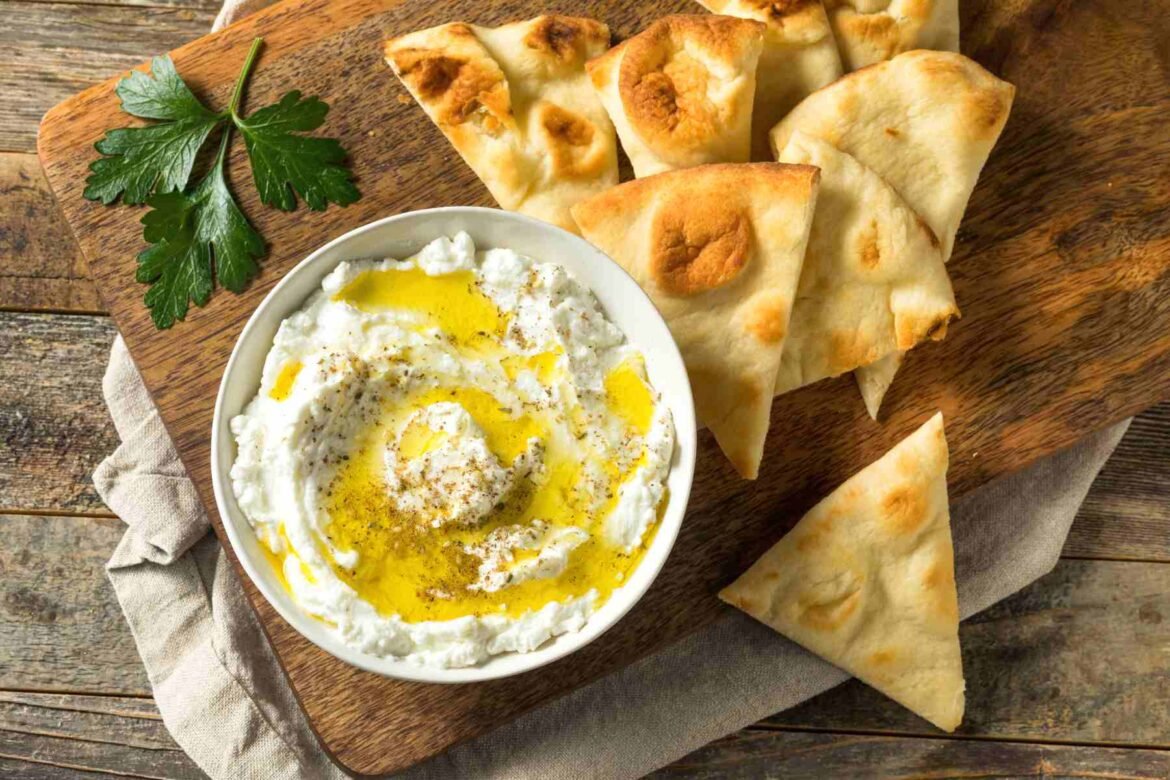Labneh Recipe is probably one of the absolute basics of Levantine cuisine. There is hardly a table without this delicious cream cheese. The basic recipe is not only incredibly versatile, but also incredibly easy to prepare.
All you need is yoghurt and a pinch of salt. Leave the yoghurt to drain overnight in a straining cloth – the next morning you have labneh.
Labneh is very versatile. Traditionally, the cream cheese is drizzled with a little olive oil and garnished with za’atar. It is always accompanied by fresh vegetables, pickled olives and, of course, fresh pita bread.

The spice mixture is firmly anchored in Lebanese cuisine and should not be missing from any larder. Whether with za’atar, garlic, fresh or dried herbs – labneh always tastes delicious!
Za’atar, by the way, is a spice mixture of thyme, roasted sesame seeds, sumac and a pinch of salt. Za’atar is also served pure alongside good olive oil. You dip your bread first in the oil and then in the zatar.

What is labneh made from?
Labneh is a Middle Eastern dairy product made from strained yogurt. It is similar to Greek yogurt, but it is made with a higher fat content yogurt and is typically more thick and creamy. To make labneh, yogurt is strained through a cheesecloth or fine-mesh sieve to remove the whey, resulting in a thicker and more concentrated product. The yogurt is then typically formed into balls or discs and rolled in herbs or spices, such as za’atar or dried mint. Labneh can be served as a spread, dip, or topping for various dishes, and it is known for its tangy and slightly sour flavor.
Is labneh just Greek yogurt?
Labneh is a type of cheese made from strained yogurt. It is a popular food in the Middle East and is often used as a spread or as a topping for dishes like falafel and shawarma. It is similar to Greek yogurt in that it is made from strained yogurt, but it has a much thicker and creamier consistency due to the longer straining process. Greek yogurt is also made from strained yogurt, but it is typically made from cow’s milk and is not as thick or creamy as labneh.

What can you use labneh for?
Labneh can be used in a variety of ways. It is often served as a spread or dip, and can be paired with a variety of toppings such as olive oil, herbs, spices, or nuts. It can also be used as a topping for sandwiches or wraps, or as a condiment for grilled meats or vegetables. Labneh is also a popular ingredient in many Middle Eastern dishes, such as falafel, shawarma, and meze platters. It can also be used in baking as a substitute for cream cheese or sour cream. Some people also enjoy eating labneh on its own as a snack, spread on crackers or bread.
Is labneh good for your gut?
Like other fermented dairy products, labneh may be beneficial for gut health due to the presence of probiotics. Probiotics are live microorganisms that are similar to the beneficial microorganisms found in the human gut. They are often referred to as “good” or “helpful” bacteria because they can help maintain the balance of microorganisms in the gut and support digestive health. Some studies have suggested that consuming probiotics may help to improve the function of the digestive system and support immune system health. However, it is important to note that more research is needed to fully understand the potential health benefits of probiotics and how they may affect different individuals. As with any food, it is important to consume labneh in moderation as part of a balanced diet.

Best Labneh Recipe
Servings: 4 Preparation:5 minutes Cooking time: 5 minutes Calories: 334 Fat: 27g
Ingredients
500 g yoghurt
1 pinch of salt
Olive oil
Za’atar
Instructions
- Put the yoghurt in the straining cloth and leave to drain overnight in the refrigerator.
- Stir the labneh with a pinch of salt until creamy and serve.
- Serving tip: Labneh is classically served with a good drizzle of olive oil and za’atar.
Would you like to join our Pinterest page, where many delicious and simple recipes are shared every day?

If you like our recipe, would you please support us by sharing it?
